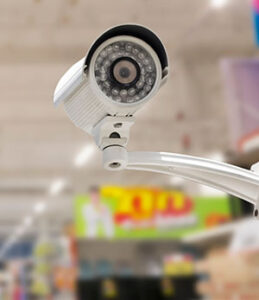Is it Time to Upgrade Your Loss Prevention Technology?
Originally published: October 16, 2019
Updated: May 26, 2023
In 2022, California authorities busted a ring of professional shoplifters that lifted $135,000 in merchandise from a variety of large retailers. Home Depot has experienced such high theft of its power tools that the hardware chain electronically disables them until they are properly scanned and activated upon purchase. Rampant theft in 2023 caused many large retailers – Walmart, Target, Macy’s, Nordstrom, and Best Buy among others – to close stores in metro areas ranging from Portland, Oregon, to New York City. And just last month, Target announced in its earnings report that it would lose $500 million due to retail theft. With such crimes on the rise, all retail business owners should probably ask themselves: Is it time to upgrade my loss prevention technology?
The “35th annual Retail Theft Survey,” from loss prevention consulting firm Jack L. Hayes International, shows 81% of U.S. retailers reported an uptick in shrink in 2022. The size of the thefts have increased, too. Last year, the average per-case theft value reached $846.11 last year, a 17.1% increase from 2021.
Inventory shrink, in which theft is the most prevalent factor, cost U.S. retailers just under $100 billion in 2022. Organized retail crime (ORC) is the major player in the theft, accounting for roughly $30 billion each year. A survey from the National Retail Federation shows that domestic retailers reported a 26.5% increase in organized retail crime in 2021. With the increased number of opportunities afforded to thieves, an investment in loss prevention technology looks like a wise move for any retail store.
Expanding Shrinkage
The NRF says retail shrinkage can be lumped into three broad categories – external theft, internal theft, and administrative errors. Robberies, or external theft, which ranges from shoplifting individual items to organized retail crime, tops the list for shrinkage. Internal theft is employee theft, which can include return fraud, vendor fraud, and “sweetheart” deals – theft or fraud involving an employee and accomplice. Administrative errors range from mistakes at the checkout counter to inventory mismanagement.
The 2021 NRF Retail Security Survey shows the increase in shrinkage is spread evenly across the board. Respondents attributed the greatest portion of shrink to:
External theft including organized retail crime – 37%
Employee/internal theft – 28.5%
Inventory control failures – 25.7%
Technology is Opening Doors …
Retail’s evolution from conventional sales in brick-and-mortar stores to multichannel transactions with both online and in-store customers has proven to be a double-edged proposition. Multichannel retail allows businesses opportunities to sell more. However, it also opens them up to more forms of theft and fraud.
Cybercrime is another door retail business has found difficult to monitor. Cybercrime can range from the theft of company data to the theft of cash through electronic payment terminals. Target Corporation lost up to 40 million credit and debit card numbers of their shoppers to a data breach during the 2013 holiday shopping season.
… And Closing Doors
Loss prevention technology that guards a business’s data and payment collection starts at the point of sale – the payment terminals – and stretches into its computer network and throughout a store. It features everything from PCI-compliant payment terminals to business network hardware and monitoring by retail technology providers.
This tech includes:
Point of sale (POS) analytics
Video surveillance analytics
Radio-Frequency Identification (RFID)
Loss Prevention software
Fingerprint identification at the point of sale
Facial recognition technology
However, retailers aren’t flocking to take advantage of the new tools. According to the NRF 2022 Retail Security Survey, less than half of retail businesses employ emerging or advanced loss prevention technologies.
The point-of-sale system is the retail platform for a business and the hub of transaction data. So, it makes sense that it should also be the base camp for loss prevention technology.
 VIRTUAL GUARD DOG
VIRTUAL GUARD DOG
Point-of-sale and video surveillance analytics are the eyes and ears in determining where a business’s weak points are when it comes to loss prevention. Working together they can plug those holes and reduce shrinkage.
Security providers like Watcher Total Protection integrate with point-of-sale systems to marry sales transaction data and video surveillance to protect stores from shoplifting and retail fraud. They allow businesses to call up and review digital video of transactions. They display specific products sold, invoice amounts, payment types, and the actions taken by the cashier. It makes spotting theft and fraud easier and more efficient.
Health and beauty products and power tools are two of the leading targets of theft, according to Watcher. This kind of software and point-of-sale integration allows businesses to:
Manage operations
React to customers more effectively
Prosecute shoplifters and employees who steal
View systems through mobile connections
“With a point-of-sale integration,” says Nathan Looper, of Watcher Total Protection, “you can see (on the screen) anything that is on that receipt. What’s really nice about the Paladin integration is we get that data (in real-time) as stuff is scanned. Some point-of-sale systems, when they do the integration, we actually don’t get that information until a receipt is printed.”

CCTV system security in the shopping mall.
ANALYTICAL APPROACH
Beyond the checkout stand and its video cameras, public view monitors, which display surveillance images from all areas of a store, have proven to cut shoplifting by up to 80%.
“Video analytics is the capability of automatically analyzing video to detect and determine if an anomaly has taken place based on a set of instructions built into the video software,” says Robert Moraca, National Retail Federation vice president for loss prevention. “The technology is able to count items, superimpose the register receipt over the video and then track things like item count compared to the register receipt, voids, returns and even instances where the cash register drawer has been open too long.”
Analytics allows retailers to identify incidents that lead to theft, establish relationships between them and adjust or change businesses practices to reduce them.
TECHNOLOGY OF THE TRADE
Burglar alarms, digital video surveillance, use of armored cars for deposits, point-of-sale analytics, and customer-visible close circuit monitors are the top five loss prevention methods currently in use. The emerging technologies stores are investing in are:
RFID (radio frequency identification) systems – 38.6%
POS/SCO video analytics – 29.8%
License plate recognition – 19.3%
AI-based perimeter surveillance – 14%
The use of merchandise alarms, including RFID, is the fastest-growing trend in loss prevention technology.
OTHER STEPS
Loss prevention technology isn’t the only way to slow theft.
Employee training is a valuable tool in deterring theft. Associates should be trained to be vigilant both inside and outside the store.
Product knowledge is also a big part of deterring theft. Some shoplifters swap UPC stickers or tags on items they want to steal for those on cheaper items. Solid product and pricing knowledge prevent these kinds of schemes.
Interacting with your customers is another way to reduce shrinkage, according to Curtis Baillie, an independent security management consultant. He says attention is the last thing shoplifters want and if they are getting it from sales associates, they’ll most likely take their “business” elsewhere.
Monitoring your garbage can be a theft deterrent, too. Some shoplifters drop items into trash bins inside and outside a store and then return to collect them later. So, keeping an eye on the garbage can keep merchandise on the shelves.
“A successful program to reduce (shrinkage) at POS leverages both technology and training,” Lisa LaBruno, senior vice president for retail operations at the Retail Industry Leaders Association (RILA), an industry organization, tells CSO Online. “Among the key components of associate training is making every employee feel like he or she has a responsibility to prevent shrink from occurring.”
Loss prevention technology is continually evolving as it deals with new and increasing threats. Often, the best defense is to use the new tools technology provides to deter the onslaught.
Brian Bullock
Author


